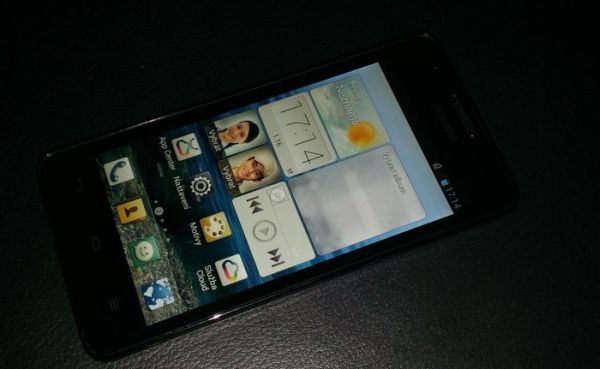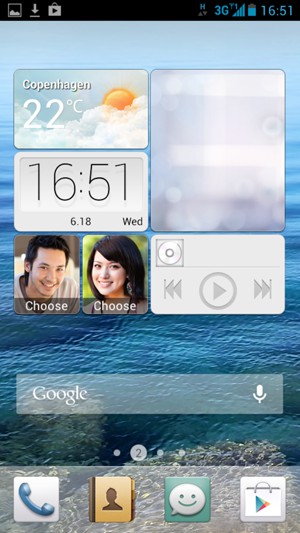

Swiping around the multiple homescreens was juddery and jerky, with none of the smoothness you'd expect to see from an Android Jelly Bean phone.

Its lesser performance is likely down to the vast changes Huawei has made to the interface, which I found provided a very sluggish experience. The Z2, however, is powered by a single-core 1GHz chip, so I should have seen better numbers from the Huawei phone. It achieved a score of 578 on the Geekbench benchmark test, putting it almost exactly alongside the Acer Liquid Z2, which achieved 579. Huawei's bloated software is clearly not helping. I expected a better performance from a dual-core processor. It's not likely to be a massive problem though - nine homescreens is plenty and you can put apps into folders, each containing up to 16 apps. Once the screens are all filled, apps simply won't be available to you until you free up some room. That's particularly important if you make a habit of filling entire screens with widgets. It's worth bearing in mind too that with no dedicated app menu and a finite number of homescreens, you can run out of space. You can at least organise them how you want, so you can always set aside a certain screen just for app icons. Swiping from one side to the other takes time and trying to remember where you put that new game can be difficult. There are up to nine homescreens in total, which, once you've thrown down your usual live widgets, means there's a massive amount of information stretched across the homescreens. That list of apps might look like a separate menu, but it's just one of the nine homescreens - good luck finding your favourite games in that lot.

There's also a groove in the plastic, circling the lens, presumably done in an attempt to show some kind of effort in the design. The back is broken by the Huawei logo, the camera lens and flash. It's a standard black oblong, dominated by glass on the front, with a plain expanse of plastic on the back. The least kind way would probably be 'miserably dull'. The kindest way to describe the G510's design would be 'functional'. If you particularly want a big phone without the big price, the G510 is worth a look, but your money can be better spent elsewhere. It's similarly priced, has plenty of power, looks infinitely better and its Windows Phone 8 software is much nicer to use. Otherwise, look towards the Nokia Lumia 620. If you can strip out all the manufacturer software and use vanilla Android, you'll have a better time (and invalidate your warranty). Huawei has tinkered with the Android Jelly Bean experience so much though that it's bogged the phone down, making it sluggish and unpleasant. It's powered by a 1.2GHz dual-core processor, which is a decent engine for a budget phone.


 0 kommentar(er)
0 kommentar(er)
